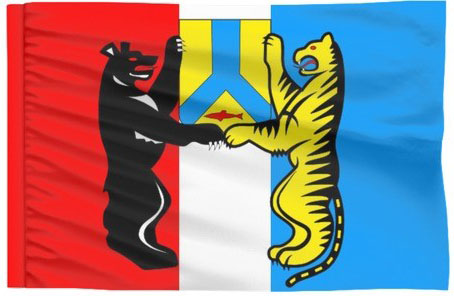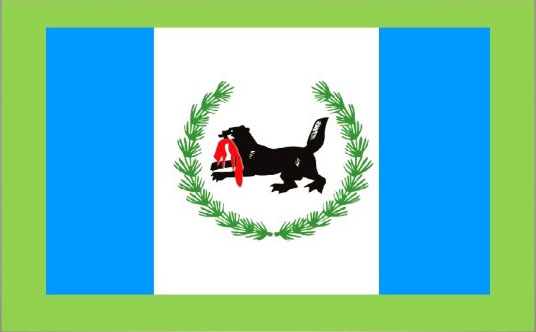Russian cuisine has some delicious dishes which you should definitely taste when visiting the country. Russian cuisine has absorbed European, eastern, southern and northern influences and it can vary from region to region, even in respect of the same dish. Russian food tends to be very heavy with lots of fat due to the use of oil, butter, sour cream and mayonnaise. This can be explained by the traditional need of calories during Russia's harsh winters. Pickled foods also feature heavily, again due to the winter and the need to preserve fresh products. Traditionally Russian food was cooked in special ovens which even today are still found all over Russian villages.
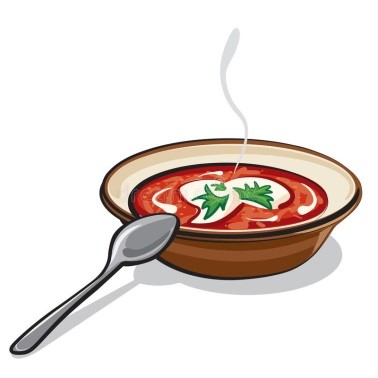 |
Borsht (борщ)Borscht is arguably the most well-known Russian dish in the West, although it is usually incorrectly translated as beetroot soup, which doesn't make it sound as great as it really is. Made with meat and vegetables that usually include potatoes, carrots, onions, cabbage, garlic, and beetroot, borscht is a staple dish of the Russian culture. There are various versions of its origin, including that it came into Russian cuisine from Ukraine, where it is also extremely popular. |
 |
Blinis (блины)Blinis come from the Slavic pagan traditions and symbolize the sun and the gods that represent it. They were originally made during the week of Maslenitsa (the religious and folk holiday before the Great Lent) and are still one of the most favored dishes in Russia. There are various recipes for blinis, including small drop-scones, lacy paper-thin large blinis, sweet thicker pancakes made with milk, and many more. They are often used as wraps with meat, vegetable, and grain-based fillings. |
 |
Sirniki (сырники)Sirniki are small blinis made of cottage cheese. This is a typical food for breakfast or branch. |
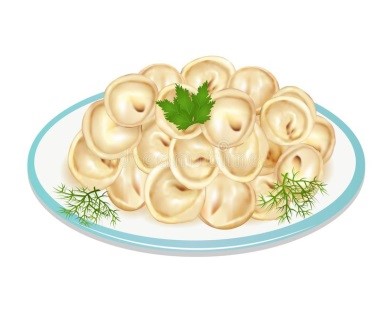 |
Pelminy (пельмени)A simple but tasty and filling dish, pelmeni are made from meat, flour, eggs, and water, sometimes adding spices such as garlic, salt, and pepper. The small dumplings are then boiled for several minutes. Due to the simplicity of the cooking process, as well as the fact that frozen pelmeni can keep for months, this dish was popular among hunters and travelers who carried pelmeni with them and cooked them on a campfire. |
 |
Vareniki (вареники)A Ukrainian dish, vareniki are very popular in Russia, particularly in the Southern areas that are close to Ukraine. They are very similar to pelmeni, but are usually larger and have vegetarian fillings, which are often sweet. Ukrainians adopted the recipe from the Turkish dish dush-vara. In Russia, most home cooks make cherry, strawberry, or curd cheese-filled vareniki. |
 |
Caviar (икра)Caviar is a popular item on Russian menus and it is usually the red variety (salmon roe) rather than the rarer and more expensive black variety (sturgeon caviar). However the Russian word for caviar (ikra) is also used for a vegetable dish which is made of aubergines or courgettes mashed into a paste which herbs and spices. |
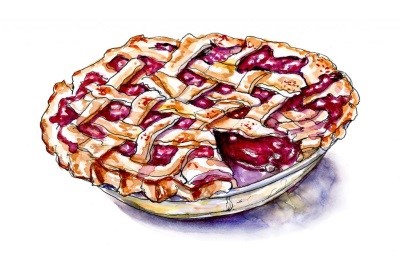 |
Pirog (пирог)Pirog is a big Russian pie which could have a savory or sweet filling. There is a great number of pirog recipes. Besides a huge variety of dough – leavenous, puff or sponge - there are also different types of pirogs, such as open (with filling on the top), closed (with filling inside) or layered. Some kinds of pirogs are specially prepared for certain celebrations, such as matchmaking or a wake ceremony. Traditionally, in Russia, pirog was a distinguishing characteristic of a good housewife. Although there are hundreds of different recipes for this dish, they were traditionally made in an oval or rectangular shape. |
 |
Pirozhki (пирожки)A smaller version of the pirog, pirozhki can be fried or baked and appeared as a more convenient alternative to the large pierogis. Sweet and savory fillings are popular with this dish, including potatoes, meat, and apples. |
 |
Kholodets (холодец)Similar in taste and preparation, these traditional Russian dishes are a variation of aspic and are made with beef and pork, creating a tasty meat jelly and served cold, usually with horseradish or mustard. Originating in France in the shape of Galantine, this dish was brought to Russia by the French chefs employed by the Russian aristocracy. Nowadays, the kholodets is interchangeable term and is a popular choice at New Year celebrations. |
 |
Ukha (уха)An ancient Russian soup, Ukha originally meant any kind of soup but eventually came to mean fish soup in particular, and from the 15th century onwards has been a fish dish unique to Russia. A classic version of this dish requires fresh fish, possibly even still alive, and only the types of fish that have a particular sticky, delicate, and sweet flavor can be used, such as pike-perch, bass, ruffe, or whitefish. Ukha can only be cooked in a non-oxidizing pot made of clay or enamel. The traditional recipe produces a sticky, transparent soup that doesn't have a strong fish smell, while the pieces of fish remain juicy and tender. |
 |
Kvas (a fermented drink)Kvas is a traditional beverage, quite refreshing in summer time. It is known as slightly fermented rye bread drink. It contains less than 1 % of alcohol, so even children are allowed to drink it. |
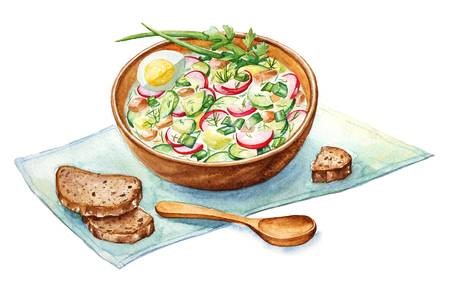 |
Okroshka (окрошка)As the word окрошка (made of crumbs, pieces) suggests, this traditional Russian dish was made from leftovers, originally vegetables covered with kvas, a unique Russian drink made from bread. Okroshka was a poor man's dish, but eventually became popular with the rich, too, whose chefs began adding meat. Okroshka is served cold and is a refreshing dish to have in the summer. |
 |
Shchi (щи)Shchi is one of the staples of Russian cuisine known since the 9th century. |
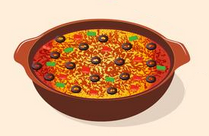 |
Solyanka (солянка)Solyanka is a thick, piquant soup popular in Russian and Ukrainian cuisine. It can be cooked with meat, fish, or mushrooms, other ingredients include olives, pickled cucumbers with brine, cabbage, potatoe, sour cream and dill. |
 |
Herring under the fur coat (селедка под шубой)Herring under the fur coat - is a traditional Russian salad. It's loved in Russia but might appear a rather weird dish to a foreigners. The salad has several layers: salted herring is covered with chopped onions, potatoes, carrots, beet roots and dressed with mayonnaise. |
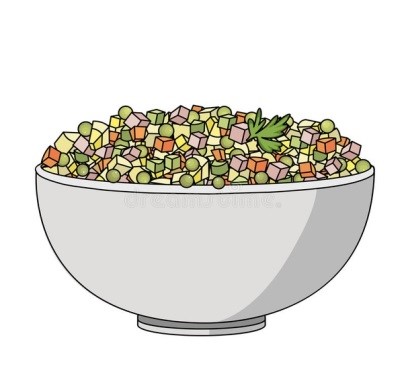 |
Salad Olivier (салат оливье)Salad Olivier is usually known as Russian salad in the West. It is popular in winter season. Among its ingredients are boiled potato, pees, meat, pickled cucumbers, onions, eggs and carrots. |
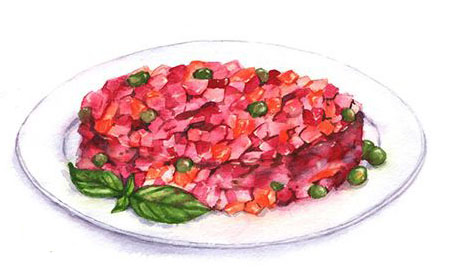 |
Vinegrette (винегрет)Vinegrette is a traditional Russian salad made of boiled beets, potatoes, carrots, pickles, onions and sauerkraut. It is easy to cook and remains very popular especially in winter time. |
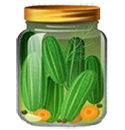 |
Pickles (соленья)Pickled cucumbers have been known in Russian for centuries. Since it is quite commonly grown culture, lot of recipes how to pickle cucumbers appeared. There is century old tradition in Russian to eat pickles as a “chaser” after drinking vodka, another tradition - to have them with potatoes. |
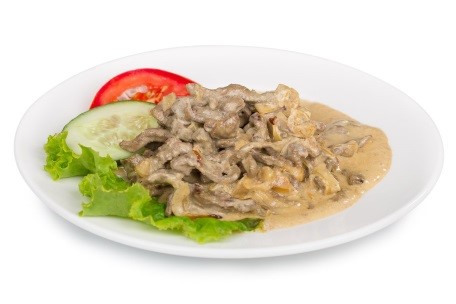 |
Beef stroganoff (бефстроганов)Beef stroganoff - a Russian dish very popular around the world. Small pieces of beef filet (usually strips) are sautéed in sour cream together with onions and mushrooms. |
 |
Chicken kiev/Kiev cutlet (котлета по-Киески)Chicken kiev (Kiev cutlet) is a popular dish of chicken breast rolled around butter. It’s often stuffed with grated cheese, mushrooms, herbs, egg yolk, then breaded and baked in oil. |
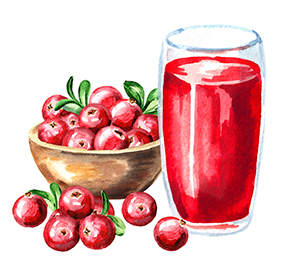 |
Mors (Морс)Mors is a popular Russian drink made of sweetened berry juice mixed with water. Most traditional mors is prepared on the basis of cranberries, but you can also taste mors made of blackcurrant, raspberry, sea-buckthorn, cowberry and other berries of the season. |
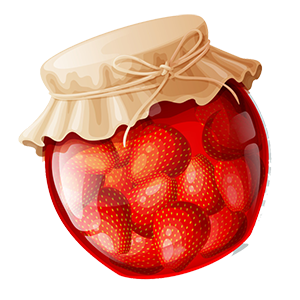 |
Varenye (варенье)A traditional Russian home-made jam. It’s very popular in Russia to make jam at home out of strawberry, apricots, cherry, raspberry and other fruits and berries of the season |
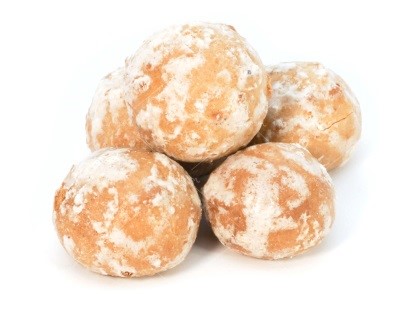 |
Pryaniki (пряники)Pryanik is a sweet bread or cookie flavored with spices; it’s often described as "Russian gingerbread". Praniki are usually filled with jam, caramel or honey. |
Ethnic cuisine of Buryatia
Buryatia is a part of Siberia with a rich ancient history. Traditionally Buryats were cattle breeders, which determined the peculiarities of their cuisine. Meat dishes predominate in their daily diet: in winter it is beef and horse meat, and in summer - lamb. They use pork less often. The source of a variety of fish dishes is the unique and purest Lake Baikal. Almost all the Buryat menus are made up of natural products, sometimes, as in the case with stroganina, in raw form - the Buryats got adapted to cook food that helped them to survive in harsh conditions.
A special place in the Buryat cuisine is occupied by dairy products and dishes made of milk - Buryats prepare drinks from milk, second and first courses and even bread.
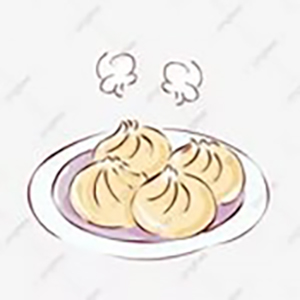 |
Boosy (бузы)Boosy or posy are pies stuffed with finely chopped horse meat, beef or lamb mixed with onions and visceral fat. The main condition for delicious boosy is that mincemeat must be juicy. The dough is same like for home-made noodles, but these traditional pies are steamed. |
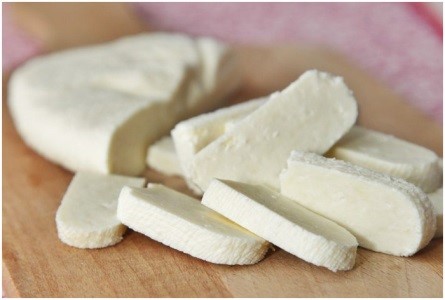 |
Huruud (хурууд)Huruud is pressed dried homemade cheese, which is eaten by locals like bread. It is prepared in the following way: fresh whole milk is kept in a cool place for two - three days to ferment. Thick sour cream is taken from the surface and the remaining sour milk is used to make cottage cheese, a tasty and nutritious lasting food. It is simmered for five minutes. The resulting cottage cheese mass is filtered, then spread out into flat cakes,pressed with wooden planks and exposed to sunlight for drying. |
 |
Ayrhan (айран)Ayrhan is Buryat Dry Curd. Whole milk is brought to boiling, cooled down to 25-30 degrees, fermented with adding sour milk into it and kept in a warm place. The resulting curd is gently put into several layers of gauze and let the buttermilk drain. Then it is wrapped in gauze and put under the press for 5-6 hours. The cottage cheese obtained is dried in a hot place (at the temperature of +35 to + 40 Centigrade). The product lasts for a long time, like a month or even more. |
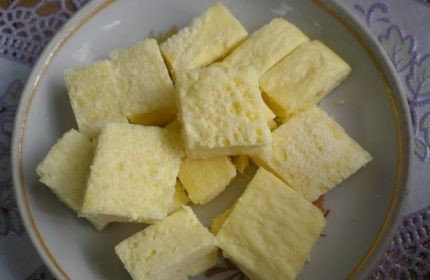 |
Urme (урмэ)Urme (Buryat Milk Skin) is one of the most popular traditional Buryat dairy delicacies. The technology of making urme is quite simple. Fresh milk (preferably in a cast-iron boiler) is boiled on low heat for twenty to thirty minutes, until foam appears. Then it is kept in a cool place for 12 hours. After a while, a 1.5 to 2 cm thick layer of foam is condensed on the top of the milk. It is carefully taken off with a birch spatula and dried, if it is a warm season. In wintertime it is frozen. Dried or frozen milk skins are cut like wafers and served. 10 liters of milk allows getting only one kilogram of urme. And remaining milk is used for making a very popular and widespread cultured dairy drink called Tarag. |
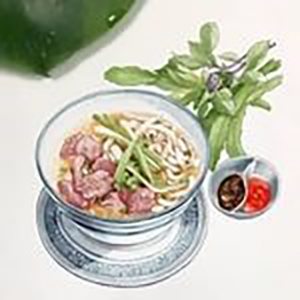 |
Shulep (шулэп)Shulep is Buryat Noodle Soup and national staple dish of the Buryat people. It is noodle soup with mutton cut into strips. The noodles are traditionally homemade: the egg-based dough is rolled into a 2-3 mm thick layer and cut long. Then the noodles are added into boiling mutton broth and cooked for 15-20 minutes. Salt, pepper, and bay leaf are added to taste. |
 |
Buchler (бухлер)Traditional soup with lamb, potatoes and homemade noodles. Despite the apparent simplicity, one of the favorite dishes of the Buryats. |
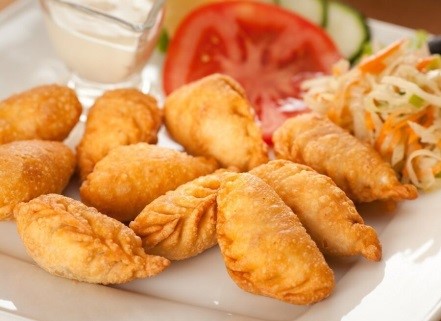 |
Khushuur (хушуур)Khushuur - It is interesting that both minced meat and dough for Khushuur are cooked in the same way as for buuzy (see the recipe below), only a little more water is added to minced meat. The difference from buuzy is that this dish is fried in fat, and readiness is checked by puncture - if fat comes out of it, the dish can be served. |
 |
Sharbin (шарбин)Sharbin (savory closed pies) – they are stuffed with minced meat and fried in a pan. |
 |
Sagudai (сагудай)Sagudai - This dish is made of raw fish, can be prepared from local northern types of fish: whitefish, muxun, chi. A great quick and versatile snack. |
 |
Omul (омуль)Omul - unique Baikal fish. |
 |
Nogoon sai (ногоон сай)Nogoon sai is Buryat green tea. In cold water shredded green tea is put and boiled, being stirred constantly to remove the bitter aftertaste. The milk is poured and all boiled again, continuously stirred, for 5-7 minutes. Some people drink it slightly salted. Served with ghee and Buryat pies. |

